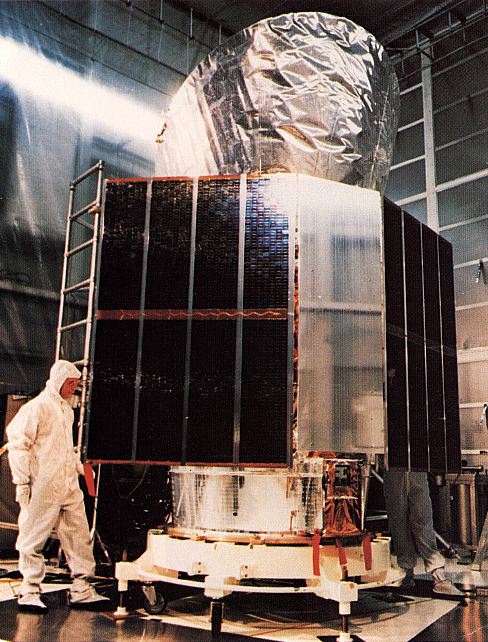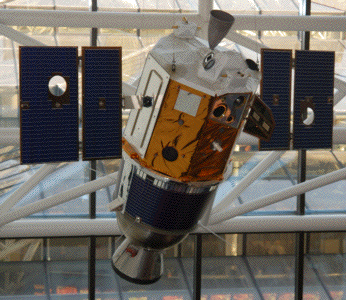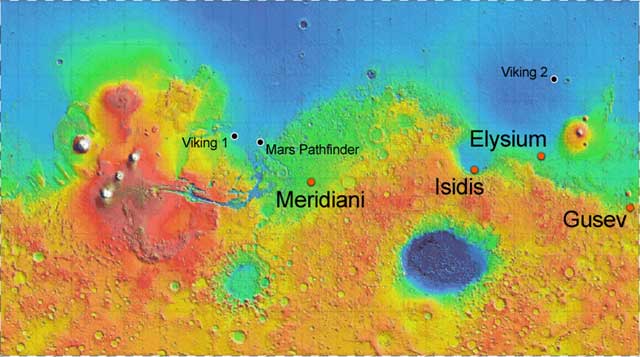If you are not already a subscriber, you are welcome to enter your email address here to sign up to receive the Space History newsletter on a daily basis. Under no circumstances will we release your legitimate email address entered here to outside persons or organizations, and it will only be used for mailing the specific information you have requested.
| Enter your email address here: |
Unsubscribe instructions are included in every newsletter issue in case you decide you no longer wish to receive it.
Note: We record the IP address from which subscriptions are entered to help prevent SPAM abuses.
Race To Space
Someone will win the prize...
... but at what cost?
Visit RaceToSpaceProject.com
to find out more!
1736
Born, Joseph-Louis Lagrange, mathematician, astronomer (mean value theorem, Lagrangian mechanics)
ref: www.L5Development.com
1914
F. Kaiser discovered asteroid #778 Theobalda; and G. Neujmin discovered asteroids #779 Nina, #780 Armenia and #781 Kartvelia.
1915
Transcontinental telephone service was inaugurated in the US when Alexander Graham Bell called Thomas Watson in San Francisco from New York City.
ref: en.wikipedia.org
1933
K. Reinmuth discovered asteroids #1250 Galanthus and #1251 Hedera.
1955
Columbia University scientists developed an atomic clock accurate to within one second in 300 years.
ref: www.famousdaily.com
1959
The first scheduled US transcontinental commercial jet flight was made by American Airlines, using a Boeing 707. Tickets for the Los Angles to New York City flight cost $301.
ref: www.centennialofflight.net
1964 13:55:00 GMT
NASA launched the Echo 2 communications satellite from Vandenberg AFB, California, on a thrust augmented Thor-Agena B.
ref: nssdc.gsfc.nasa.gov
1965
A. D. Andrews discovered asteroid #1727 Mette.
1983 02:17:00 GMT
The joint NASA/British/Dutch infrared telescope satellite IRAS was launched into polar orbit from Vandenburg AFB, California.

IRAS infrared telescope satellite
Source: NSSDCA Master Catalog
The Infrared Astronomical Satellite (IRAS) was a joint mission by the United States (NASA), the Netherlands, and the United Kingdom, launched 25 January 1983. The basic goal was to obtain a full-sky survey over the approximate wavelength range 8 to 120 micrometers with four broadband photometry channels. The satellite was a spacecraft with a telescope mounted in a liquid helium cooled cryostat. The telescope was a f/9.6 Ritchey-Chretien design with a 5.5 m focal length and a 0.57 m aperture. The mirrors were made of beryllium and cooled to approximately 4 K.
The focal plane assembly contained the survey detectors, visible star sensors for position reconstruction, a Low Resolution Spectrometer (LRS) and a Chopped Photometric Channel (CPC). The focal plane assembly was located at the Cassegrain focus of the telescope and was cooled to about 3 K.
An array of 62 detectors was used to detect the infrared flux in bands centered at 12, 25, 60, and 100 micrometers. The noise equivalent flux densities were, respectively, 0.1, 0.1, 0.1, and 0.3 Jy (1 Jansky = 1E-26 W/sq m-Hz) in the four survey bands. The positions of galactic and extragalactic sources were determined to an accuracy of 0.5 arc-min. In addition to the focal-plane detector array used for the all-sky survey, a low-resolution spectrometer and a 60-and 100-micrometer chopped photometric channel were included on IRAS.
To scan the sky for the survey, the satellite was rotated at a constant angular velocity perpendicular to the satellite-sun vector. IRAS could also be pointed at a selected celestial object for up to 12 minutes, to permit observations of selected objects with an increase in sensitivity or spatial resolution up to ten times that of the general survey.
From 9 February 1983 to 22 November 1983, IRAS conducted a survey of the sky at thermal infrared wavelengths from a 900 km polar orbit about the Earth. This survey consisted of 5749 scans along lines of constant solar elongation, between 60 and 120 degrees solar elongation. 95% of the sky was covered twice and 72% was covered three times by IRAS. In addition to detailed observations of the zodiacal cloud, IRAS also made over 8000 detections of asteroids.
Further discussion of the IRAS mission can be found in G. Neugebauer et. al., Science, v. 224, pp. 14-21, 1984, and in the entire 1 March 1984 issue of Astrophysical Journal Letters (v. 278, pp. L1-L85).
ref: irsa.ipac.caltech.edu
1987
E. W. Elst discovered asteroid #3631 Sigyn.
1992
The Hubble space telescope Field Optics Camera captured images of NGC3862/3C264, an extragalactic jet powered by a supermassive black hole at the center of a galaxy 260 million lightyears from Earth.

High Energy Jet in Galaxy NGC 3862
Credit: P. Crane (European Southern Observatory), and NASA/ESA
ref: hubblesite.org
1994 16:34:00 GMT
The US space probe Clementine was launched toward the Moon and asteroid 1620 Geographos.

BMDO/SDIO/NASA Clementine probe
Source: NSSDCA Master Catalog
Clementine was a joint project between the Ballistic Missile Defense Organization (BMDO, nee the Strategic Defense Initiative Organization, or SDIO) and NASA, launched 25 January 1994. The mission's objectives were to test sensors and spacecraft components under extended exposure to the space environment, and to make scientific observations of the Moon and the near-Earth asteroid 1620 Geographos. The Geographos observations were not made due to a spacecraft malfunction. The Lunar observations made included imaging at various wavelengths in visible, ultraviolet and infrared ranges, laser ranging altimetry, gravimetry, and charged particle measurements. These observations were for obtaining multi-spectral imaging of the entire Lunar surface, assessing the surface mineralogy of the Moon and obtaining altimetry from 60N to 60S latitude, and gravity data for the near side. There were also plans to image and determine the size, shape, rotational characteristics, surface properties, and cratering statistics of Geographos. Clementine carried 7 distinct experiments on-board: a UV/Visible Camera, a Near Infrared Camera, a Long Wavelength Infrared Camera, a High Resolution Camera, two Star Tracker Cameras, a Laser Altimeter, and a Charged Particle Telescope. Its S-band transmitter was used for communications, tracking, and in the gravimetry experiment.
The mission had two phases. After two Earth flybys, a Lunar orbit insertion was executed approximately one month after launch. Lunar mapping then took place over two months, in two parts. The first part consisted of a five hour elliptical polar orbit with a periapsis of about 400 Km at 30 degrees south latitude and an apoapsis of 8300 Km. Each orbit consisted of an 80 minute Lunar mapping phase near periapsis and 139 minutes of downlink at apoapsis. After one month of mapping from this first orbit, the orbit was rotated to a periapsis at 30 degrees north latitude, where it remained for one more month. This allowed global imaging and altimetry coverage from 60 degrees south to 60 degrees north, over a total of 300 orbits. After a Lunar/Earth transfer and two more Earth flybys, the spacecraft was to head for Geographos, arriving three months later for a flyby, with a nominal approach closer than 100 Km. Unfortunately, after the first Earth transfer orbit maneuver was performed on 5 May 1994, a malfunction aboard the craft (7 May 1994) caused one of the attitude control thrusters to fire for 11 minutes, using up its fuel supply and causing Clementine to spin at 80 rpm. Under those conditions, the asteroid flyby could not yield useful results, so the spacecraft was put into a geocentric orbit passing through the Van Allen radiation belts to test the various components on board. The mission ended in June 1994 when the power level onboard dropped to a point where the telemetry from the spacecraft was no longer intelligible.
See also NASA Clementine Project Information
ref: nssdc.gsfc.nasa.gov
1995
Norway launched a Black Brant XII research rocket, which was mistaken for a US Trident missile by the Olenegorsk early-warning radar station and nearly caused Russia to launch a nuclear attack. (The Norwegian Rocket Incident)
ref: en.wikipedia.org
2004 05:05:00 GMT
NASA's Mars Exploration Rover "Opportunity" (MER-B) landed at Terra Meridiani on Mars.

Mars Exploration Rover (Spirit and Opportunity) landing sites, NASA illustration
Source: NSSDCA Master Catalog
"Opportunity" (Mars Exploration Rover B) is one of the two rovers NASA launched to Mars in mid-2003. The rovers arrived at Mars in January 2004 equipped with a battery of scientific instruments, able to traverse 100 meters a day. The nominal plan called for the missions to last for 90 days, until April 2004. Over a year of surface operations, involving driving the rover, imaging, and use of the science instruments had already been achieved in 2005, and the rovers had their missions extended to at least November 2006 if they could continue to operate. Opportunity was still operating until 12 June 2018 when a dust storm forced it to hibernation, performing useful science experiments with a total accumulated driving distance surpassing that of a marathon in February 2015. In January 2019, there was some hope high winds would clear the rover's solar panels and it could resume operations.
The scientific goals of the rover missions were to gather data to help determine if life ever arose on Mars, characterize the climate of Mars, characterize the geology of Mars, and prepare for human exploration of Mars. To achieve these goals, seven science objectives were called for: 1) search for and characterize a variety of rocks and soils that hold clues to past water activity, 2) determine the distribution and composition of minerals, rocks, and soils surrounding the landing sites, 3) determine what geologic processes have shaped the local terrain and influenced the chemistry 4) perform "ground truth" of surface observations made by Mars orbiter instruments, 5) search for iron-bearing minerals, identify and quantify relative amounts of specific mineral types that contain water or were formed in water, 6) characterize the mineralogy and textures of rocks and soils and determine the processes that created them, and 7) search for geological clues to the environmental conditions that existed when liquid water was present and assess whether those environments were conducive to life.
The Mars Exploration Rovers, Spirit and Opportunity, were named through a competition sponsored by The Planetary Society and the LEGO Company.
Opportunity was launched on a heavy Delta II 7925H on 8 July 2003. After insertion into a circular Earth parking orbit, the spacecraft third stage reignited and put the craft on a trajectory to Mars, after which the aeroshell, lander, and rover separated from the third stage. The cruise phase to Mars ended on 11 December 2003, 45 days before Mars entry. The approach phase then lasted until Martian atmospheric entry on 25 January 2004. On entry, the lander and components had a mass of 827 kg and were travelling at 19,300 km/hr. The aeroshell decelerated the lander in the upper Martian atmosphere for about four minutes to a velocity of 1600 km/hr, followed by deployment of a parachute. The parachute slowed the spacecraft to about 300 km/hr. A series of tones transmitted by the spacecraft during entry and after landing indicated the successful completion of each phase. Just prior to impact, at an altitude of about 100 m, retrorockets slowed the descent, and airbags inflated to cushion the impact. The craft hit at roughly 50 km/hr and bounced and rolled along the surface, stopping in a small crater. The airbags deflated and retracted, the petals opened, and the rover deployed its solar arrays. The landing took place at 5:05 UT (Earth received time), approximately 1:15 pm local time, about two and a half hours before Earth set at Terra Meridiani. On Mars, it was the latter half of southern summer. The landing ellipse is centered at 2.07 S, 6.08 W and is roughly 119 by 17 km oriented at 88 degrees. Terra Meridiani is also known as the "Hematite Site" because it displays evidence of coarse-grained hematite, an iron-rich mineral which typically forms in water. It also appears to be one of the smoothest and therefore safest areas for a landing. An egress phase took place over the first 4 days, involving deployment of the Pancam mast and high gain antenna, rover stand up, imaging and calibration, selection of the proper egress path, and finally driving the rover off the lander deck onto the Martian surface.
The Mars Exploration Rover consists of a box-like chassis mounted on six wheels, containing a warm electronics box (WEB). On top of the WEB is the triangular rover equipment deck, on which are mounted the Pancam mast assembly, high gain, low gain, and UHF antennas, and a camera calibration target. Attached to the two forward sides of the equipment deck are solar arrays, level with the deck and extending outward, with the appearance of a pair of swept-back wings. Attached to the lower front of the WEB is the instrument deployment device, a long hinged arm which protrudes from the front of the rover.
The wheels are attached to a rocker-bogie suspension system. Each wheel has its own motor and the two front and two rear wheels are independently steerable. The rover has a top speed of 5 cm per second, but the average speed over time on flat hard ground would be 1 cm/sec or less, due to the hazard avoidance protocols. The rover is designed to withstand a tilt of 45 degrees without falling over, but is programmed to avoid exceeding tilts of 30 degrees. The warm electronics box houses the computer, batteries, and other electronic components. The box is designed to protect these components and control their temperature. Thermal control is achieved through the use of gold paint, aerogel insulation, heaters, thermostats, and radiators.
Power is provided by the solar arrays, generating up to 140 W of power under full Sun conditions, stored in two rechargeable batteries. Communications with Earth are in X-band via the high gain directional dish antenna, and the low gain omni-directional antenna. Communications with orbiting spacecraft are through the UHF antenna. The onboard computer has 128 megabytes of random access memory (RAM), augmented by 256 megabytes of flash memory and smaller amounts of other non-volatile memory, which allows the system to retain data even without power. An inertial measurement unit provides 3-axis position information.
The rover carries a suite of instruments for science and navigation. The panoramic camera (Pancam) and navigation cameras are mounted on top of the Pancam mast assembly, about 1.4 meters from the base of the wheels. The mast, mounted at the front of the equipment deck, also acts as a periscope for the Miniature Thermal Emission Spectrometer (Mini-TES). Attached to the end of the instrument deployment device are the Alpha Particle X-Ray Spectrometer (APXS), Mossbauer Spectrometer (MB), Microscopic Imager (MI), and Rock Abrasion Tool (RAT). A magnet array is attached to the front of the equipment deck. Two hazard avoidance cameras are mounted on the front of the rover and two on the rear. The group of science instruments (Pancam, Mini-TES, APXS, MB, MI, and RAT) is known as the Athena science package.
For more information, be sure to see the Mars Exploration Rover Mission home page.
ref: nssdc.gsfc.nasa.gov
2009
Died, Eleanor F. "Glo" Helin, principal investigator of the Near Earth Asteroid Tracking (NEAT) program of NASA's Jet Propulsion Laboratory
Eleanor F. "Glo" Helin (19 November 1932 - 25 January 2009) was an American astronomer and the principal investigator of the Near Earth Asteroid Tracking (NEAT) program of NASA's Jet Propulsion Laboratory. She retired in 2002.
Helin discovered or co-discovered 872 asteroids and several comets. Asteroid 3267 Glo is named for her ("Glo" was Helin's nickname).
ref: en.wikipedia.org
We are going to run out of oil!
Visit SpacePowerNow.org
to help fix the problem.
SpacePowerNow.org - For Human Survival
Please help support our efforts by shopping from our sponsors.
This newsletter and its contents are Copyright © 2006-2026 by The L5 Development Group. All rights reserved. - Publication, in part or in whole, requires previous written permission. - Academic or personal-use citations must refer to http://L5Development.com as their source. Thank you for your cooperation.
Space History Department
Resources
The L5 Development Group Home Page
The L5 Development Group Keyword Access System
Space History for January 25 /
Webmaster /
Script last modified August 23, 2018 @ 6:05 am
Copyright © 2006-2026 by The L5 Development Group. All rights reserved.
Hosted by FKEinternet




